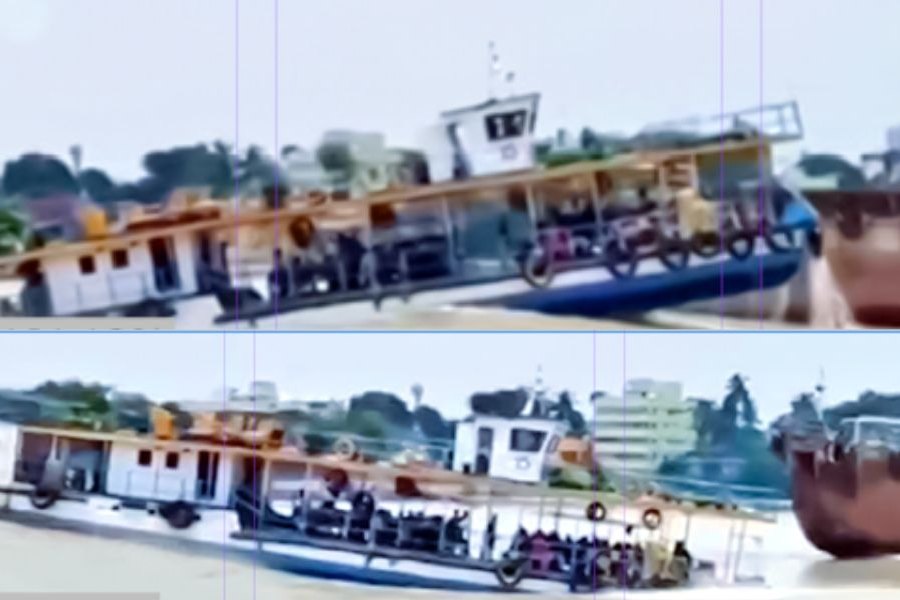A video has captured a passenger vessel tossing up and down in the midst of tall waves on the Hooghly on Wednesday afternoon, reminiscent of rafting in turbulent waters, amid screams from panicked passengers.
The vessel was travelling from Dakshineswar to Belur and the passengers were not out on a joyride by choice, said an operator of the ferry service. They were thrust into the scary situation by happenstance.
The incident came to light after the video showing the vessel swinging with the waves started circulating on social media.
The Calcutta port authorities said the tall waves were a result of a bore caused by a spring tide in the river.
“There occurs a spring and a neap tide every 14 days in every month, each with an approximate duration of seven days. During the spring tide, the tidal range (the highest water level minus the lowest water level during a tidal cycle of 12 hours and 30 minutes) is much,” said an official of Syama Prasad Mookerjee Port (formerly Calcutta Port Trust).
On July 25, the predicted tidal range in Calcutta (Garden Reach) during daytime was 4.03m, the official said.
“Additionally, during a spring tide, when the Garden Reach tidal range is more than 4m, bores (baan in Bengali) occur when the leading edge of the water column of the incoming tide forms waves and rushes through the shallower bank of the Hooghly in the Calcutta region towards upcountry. During bores, the vessels are generally anchored in the middle of the river for safety,” said the official.
“It was predicted earlier that bores would occur in the Hooghly between July 21 and 26. Bore is a predicted regular tidal phenomenon in the Hooghly. Accordingly, Syama Prasad Mookerjee Port takes action beforehand,” he said.
There are two parts of a tide, ebb and flood. The water level in the river remains low during ebb tide and goes up during flood tide.
During a spring tide, the ebb increases to five hours while the flood decreases to four hours. “With the change in duration, more water from the sea tries to enter into the river within a smaller window. This creates a pressure and gives rise to relatively taller waves,” said a maritime expert.
A driver of the ferry service between Dakshineswar and Belur, not the one who was steering the affected vessel, said it was not unusual for vessels to get caught in turbulent waters of the Hooghly. He said there was a full moon last Sunday and spring tide effects may continue for a few days after the full moon.
“We do not anchor vessels on the banks during such waves or tides. We try to keep the vessel afloat and let the waves pass. When the river calms down, we move to the banks again,” said the driver, who is aware of Wednesday afternoon’s episode.
“The waves hitting the banks damage the vessel and the jetty if the vessel is tethered to the jetty,” the driver said.
Supratim Karmakar, a river scientist, said there are segments in the river that are more silted than others. Between two such silted segments or around such segments, there are deeper channels which contain more water.
“The vessel might have been travelling over such a deep channel where the wave had grown very tall,” he said.











